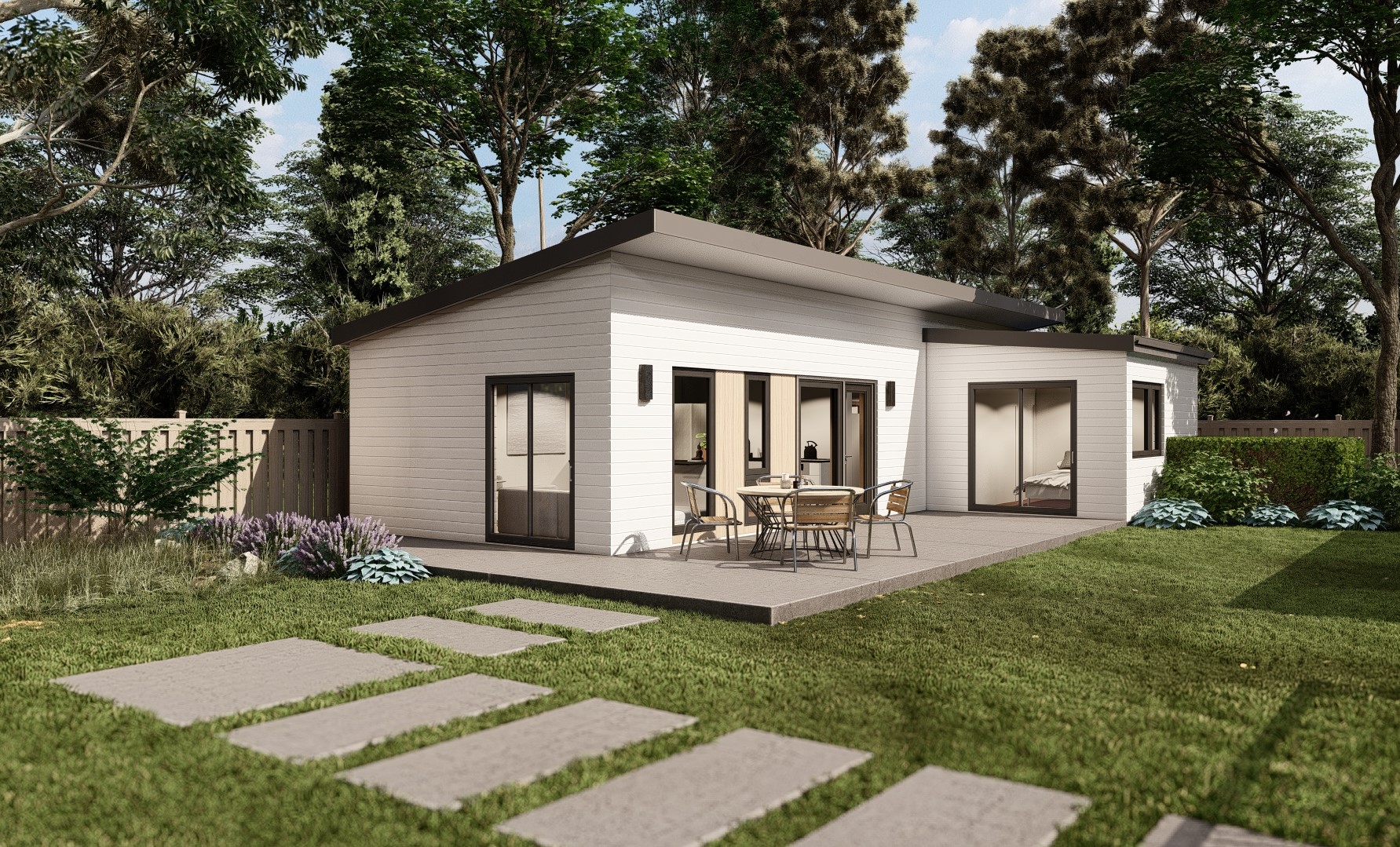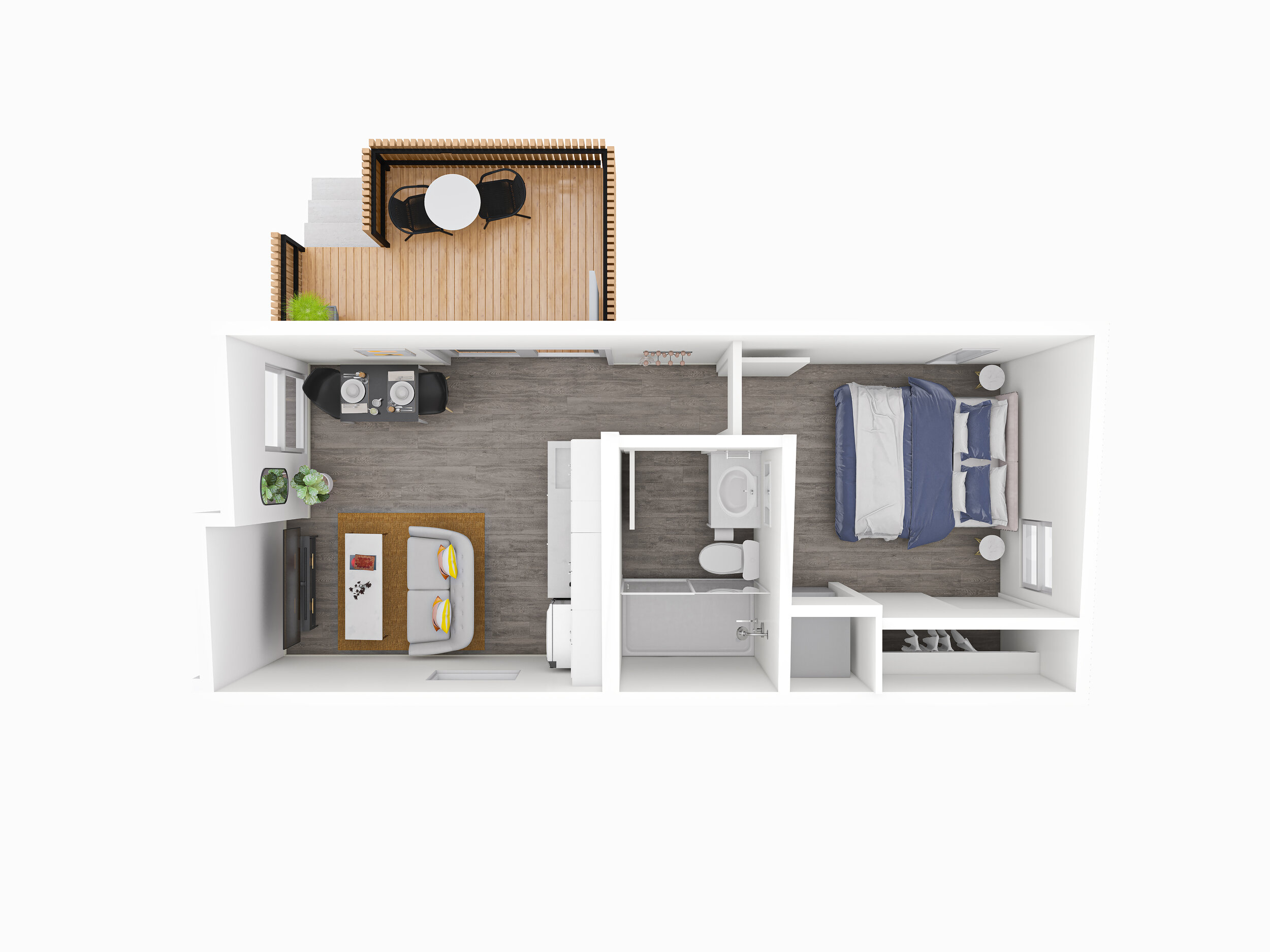Understanding 1-Bedroom ADU Plans

A 1-bedroom Accessory Dwelling Unit (ADU) offers a versatile and valuable addition to your property. It can be a great investment for homeowners looking to increase their property value, generate rental income, or provide housing for family members.
Benefits of Building a 1-Bedroom ADU
Building a 1-bedroom ADU can bring several advantages to homeowners.
- Increased Property Value: ADUs are known to increase property value significantly. A well-designed and functional 1-bedroom ADU can enhance the overall appeal and desirability of your property, leading to a higher resale value.
- Rental Income: A 1-bedroom ADU can provide a steady stream of rental income, which can help offset mortgage payments, property taxes, or other expenses. The demand for rental units is often high, especially in urban areas, making it a potentially lucrative investment.
- Multigenerational Living: A 1-bedroom ADU can be an ideal solution for multigenerational families, providing independent living space for aging parents, adult children, or other family members. This can strengthen family bonds and create a supportive living environment.
- Home Office or Studio: A 1-bedroom ADU can be converted into a home office, studio, or workshop, offering a dedicated and separate space for work or creative pursuits. This can improve productivity and create a more balanced work-life environment.
- Guest Accommodations: A 1-bedroom ADU provides comfortable and private accommodations for guests, eliminating the need for crowded living spaces or uncomfortable sleeping arrangements. This is particularly beneficial for homeowners who frequently host family or friends.
Design and Construction

Designing and constructing a 1-bedroom ADU involves careful planning, consideration of local regulations, and selection of appropriate building materials and techniques. A well-designed ADU can maximize space, create a comfortable living environment, and increase the value of your property.
Design Considerations
Designing a 1-bedroom ADU requires careful consideration of space utilization, functionality, and aesthetics. Here are some key design considerations:
- Floor Plan: A well-designed floor plan maximizes space and functionality. Open-concept layouts can create a sense of spaciousness, while well-defined areas can provide privacy and functionality. For example, a kitchen island can serve as both a countertop and a dining table, maximizing space.
- Natural Light: Maximize natural light by incorporating large windows and skylights. This can create a brighter and more welcoming space. Consider the placement of windows to ensure privacy and minimize glare.
- Storage Solutions: Built-in storage solutions, such as closets, shelves, and cabinets, can help to maximize space and keep the ADU tidy. Consider utilizing vertical space by incorporating high shelves and cabinets.
- Energy Efficiency: Incorporate energy-efficient features such as insulation, high-performance windows, and energy-efficient appliances to reduce energy consumption and costs.
Maximizing Space
Maximizing space in a 1-bedroom ADU is crucial to creating a comfortable and functional living environment. Here are some tips:
- Multifunctional Furniture: Choose furniture that serves multiple purposes, such as a sofa bed that can double as a guest bed or a coffee table with storage.
- Vertical Space: Utilize vertical space by incorporating high shelves, cabinets, and storage solutions. This can help to keep belongings organized and out of sight.
- Compact Appliances: Choose compact appliances, such as a mini-fridge or a compact dishwasher, to save space in the kitchen.
- Open Concept Layout: An open-concept layout can make the space feel larger and more inviting.
Construction Materials and Techniques
The choice of building materials and construction techniques will impact the cost, durability, and aesthetics of your ADU. Here are some common options:
- Traditional Construction: Traditional construction using wood framing, drywall, and roofing materials is a common and reliable method. This approach offers flexibility in design and customization but can be more expensive than other options.
- Prefabricated Construction: Prefabricated ADUs are built off-site and then transported and assembled on the property. This method can be faster and more cost-effective than traditional construction. However, it may offer less flexibility in design and customization.
- Modular Construction: Modular construction involves building the ADU in prefabricated modules that are then assembled on-site. This method can be faster and more efficient than traditional construction, but it may require more site preparation.
- Container Homes: Container homes are constructed using shipping containers. This option can be cost-effective and sustainable. However, it may require significant modifications to create a livable space.
ADU Construction Costs
The cost of constructing a 1-bedroom ADU can vary significantly depending on the size, location, materials, and construction method. The following table provides a general estimate of costs for different construction methods:
| Construction Method | Estimated Cost | Traditional Construction | $150,000 – $250,000 | Prefabricated Construction | $100,000 – $200,000 | Modular Construction | $125,000 – $225,000 | Container Homes | $75,000 – $150,000 |
|---|
Note: These are just estimates, and actual costs may vary. It’s important to consult with local contractors and obtain multiple bids to get an accurate cost assessment.
Legal and Permitting Considerations: 1 Bedroom Adu Plans

Navigating the legal and permitting landscape is crucial for successful ADU construction. Understanding zoning regulations, permit requirements, and potential impact on property value is essential before embarking on your ADU project.
Zoning Regulations and Permitting Requirements
Local zoning regulations govern the construction of ADUs. These regulations vary widely by city and county and dictate factors such as:
- Maximum size and height: Zoning regulations often specify the maximum square footage and height allowed for ADUs.
- Setbacks: These regulations determine the minimum distance an ADU must be from property lines and other structures.
- Parking requirements: Many jurisdictions require additional parking spaces for ADUs.
- Utility connections: Regulations may address how ADUs connect to water, sewer, and electrical systems.
- Design guidelines: Some cities may have design guidelines for ADUs to ensure consistency with neighborhood aesthetics.
It is essential to consult with your local planning department to determine the specific zoning regulations applicable to your property.
Impact of an ADU on Property Value
ADUs can positively impact property value, but the extent of this impact depends on several factors:
- Location: ADUs in desirable locations with high demand for rental units tend to increase property value more significantly.
- Design and quality: Well-designed and high-quality ADUs contribute to a higher perceived value.
- Market conditions: The overall real estate market and demand for rental units influence the impact of an ADU on property value.
Research and consult with real estate professionals to assess the potential impact of an ADU on your property value in your specific location.
Documents and Approvals
Building an ADU typically requires obtaining various permits and approvals. The specific documents needed may vary by jurisdiction, but generally include:
- Building permit: This permit authorizes construction of the ADU and ensures compliance with building codes.
- Zoning permit: This permit verifies compliance with local zoning regulations.
- Site plan: This plan shows the location of the ADU on the property, including setbacks and parking.
- Architectural plans: These plans detail the design and construction of the ADU.
- Engineering plans: These plans address structural elements, foundation, and other engineering aspects.
- Utility permits: These permits are required for connecting the ADU to water, sewer, and electrical systems.
It is advisable to consult with a licensed architect or engineer to prepare the necessary plans and ensure compliance with all applicable regulations.
Resources for ADU Contractors and Designers, 1 bedroom adu plans
Finding qualified contractors and designers experienced in ADU construction is essential. Here are some resources for finding ADU-specific professionals:
- Local home builders’ associations: These associations often have members specializing in ADU construction.
- Online directories: Websites like Houzz, Angie’s List, and HomeAdvisor list contractors and designers with ADU experience.
- Word-of-mouth referrals: Ask friends, neighbors, and family for recommendations of reliable ADU contractors.
- ADU-specific design firms: Some architectural and design firms specialize in ADU construction and can provide tailored solutions.
Thoroughly vet potential contractors and designers by reviewing their experience, qualifications, and customer reviews before making a decision.
Dreaming of a cozy and independent living space? 1 bedroom ADU plans offer a fantastic way to create a private retreat on your property. For inspiration, check out the 1 bedroom apartments in Sparks, NV , which showcase the potential of compact living.
Whether you envision a modern studio or a charming cottage, ADU plans can provide a personalized and efficient living solution.
Dreaming of a cozy, independent space? A 1-bedroom ADU plan might be your ticket to homeownership. But if you’re on a tighter budget, consider exploring the world of cheap 1 bedroom apartments in El Paso, TX. These apartments can provide a comfortable and affordable base while you save up for your dream ADU, offering a smart and practical approach to achieving your housing goals.